Ruth Hull Chatlien's Blog, page 3
August 14, 2022
Sunday Review: The Social Graces by Renée Rosen
The Social Graces tells the story of the rivalry between two women, a generation apart, who led New York Society in the late 1800s.
Caroline Schermerhorn Astor was known as THE Mrs. Astor. If you weren’t among the 400 socialites invited to her annual ball or her summer clambake in Newport, RI, you simply weren’t part of the elite. And people with “new money”—the railroad barons, etc.—didn’t have a prayer of receiving one of her coveted invitations. That is, until determined, clever Alva Vanderbilt came along.
This sharp dichotomy between old and new money is tremendously ironic. The founder of the Astor fortune, the first John Jacob Astor, was hardly a cultivated person. I describe him this way in my first novel, The Ambitious Madame Bonaparte:
Astor was a short man with dark blond hair, drooping brown eyes, and a large pointed nose. He spoke English with a German accent, and his manners were nearly as rough as the fur trappers who had made his fortune, but Betsy liked him because they shared the traits of ambition, determination, and practicality.
To be honest, I wasn’t sure how much I’d like a novel about two wealthy, privileged women competing to be the queen of New York society. However, I thought that, in their separate narratives (each has third-person point-of-view chapters threaded throughout the book), Rosen dramatized enough of the heartbreaks they endured and the life lessons they learned to convey their essential humanity. Both women make terrible mistakes with regard to their children, but in this portrayal at least, I never doubted their good intentions. (I’ve read enough other accounts of Alva Vanderbilt to wonder if Rosen was perhaps being too kind.)
Rosen made one other choice in the novel that I absolutely loved. Two of my favorite pieces of literature—the short story “A Rose for Emily” by William Faulkner and the poem “Richard Cory” by Edwin Arlington Robinson—share an unusual characteristic: both are narrated by the collective voice of the community in which the main character lives. I have always felt this modern version of the Greek chorus adds a unique perspective and have wished that more authors would make use of the technique.
Well, Rosen has a third voice to her narrative, in addition to the focusing closely on the lives of each woman. She has chapters narrated by “society” that give the collective opinion on the actions of Caroline Astor and Alva Vanderbilt. The last word, so to speak. This device reveals more of the broader impact of the two women, and I found it very effective.
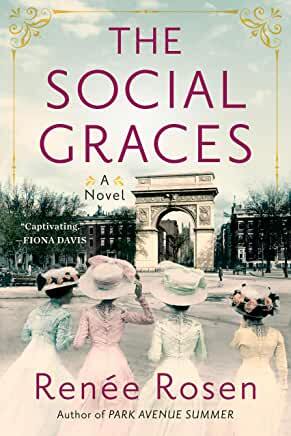
August 7, 2022
Sunday Review: The Paris Bookseller by Kerry Maher
This historical novel tells the story of Sylvia Beach, founder and owner of the famous Shakespeare and Company English-language bookstore in Paris. Although this is a single-timeline novel, there are a couple of important threads to the story: Beach’s love affair with the French bookstore owner Adrienne Monnier and her interactions with the writers and artists who flocked to Paris in the 1920s, most importantly James Joyce.
Beach knew Joyce at the time he was writing his masterpiece Ulysses. Excerpts had been published in literary journals, and Joyce’s frank depictions of bodily functions and human sexuality caused American officials to deem it pornography, making it a crime to sell or even send through the U.S. mails. Beach believed strongly in Joyce’s art, so she decided to publish the novel in Paris, even though she had never published anything before.
As portrayed in the novel, the relationship between Beach and Joyce is tremendously complicated. Joyce is grateful, in his own way, but he also has the kind of entitled personality that just accepts the things that other people do for him. One of the interesting questions of the story is this: does Joyce take advantage of Beach, or does Beach fail to stand up for herself? Or is their relationship an unhealthy combination in which both are true?
Other prominent literary figures wander through the pages, among them Ernest Hemingway, F. Scott Fitzgerald, and Gertrude Stein. Beach was more than just a bookstore owner; she promoted the groundbreaking literature of the time, and many people felt that she played a pivotal role in nurturing their careers.
Beach’s relationship with Monnier is beautifully depicted. The two women have a deep and abiding love, but as they live through legal hassles, economic hard times, and World War II, the stressors they experience affect them in different ways, and they begin to grow apart. I never lost my sympathy for either of them even when I wanted their choices to be different.
This is an excellent novel for lovers of Paris and of American letters.

July 31, 2022
Sunday Review: Booth by Karen Joy Fowler
This is the first book of Fowler’s I’ve read, and I didn’t know what to expect. I checked it out of the library because learning more about the famous, or infamous, Booth family intrigued me.
For those who don’t know, John Wilkes Booth, the man who assassinated Lincoln, was a younger son of a famous family of 19th-century Anglo-American actors. Their father, Junius Brutus Booth, was highly acclaimed as was John’s older brother Edwin. Another brother, Junius Jr., was also an actor although not as highly regarded. I already knew from past research that during the Civil War Edwin actually saved the life of Abraham Lincoln’s oldest son, Robert—an event that can truly be described as stranger than fiction. So I wondered what other surprising things I might learn about the Booths.
The book is divided into sections offering the point of view of different members of the family, including sisters Rosalie and Asia and brother Edwin. In the author’s note at the end, Fowler tells us that although Rosalie existed, almost nothing is known about her—her existence in the surviving family records is summed up by the repeated epithet “poor Rose”—so that narrator is an almost entirely fictional creation. In Fowler’s hands, she is old-fashioned, less gifted than her creative siblings, unusually close to her mother, haunted by the memory of the many brothers and sisters who died young, and in constant pain from worsening scoliosis.
Asia is devoted to her family, particularly her brothers. To her, being a Booth is everything, so she plans to chronicle the careers of her thespian father and brothers. Yet, she is unconventional in her own way and provides an entirely different perspective on the Booth tribe than her much older sister does. Asia is the one who most represents what it is like to adore a relative who later commits a monstrous public crime.
Edwin is the Booth most haunted by the legacy of the family patriarch. As a boy, he was charged with accompanying his father on tour and trying (impossibly) to keep him from drinking. Edwin longs without much hope for Junius Sr. to acknowledge him as the heir best equipped to carry on the Booth acting legacy. These family obligations and his own personal failings oppress Edwin for years, along with a growing rift with John, who becomes increasingly radical as the war marches to its bloody end.
This then is the family that produces the assassin who became perhaps the most vilified American of the late 1800s. The book sustained my interest throughout; the shifting points of view provide sometimes contradictory opinions that help show what a tangle it can be to sort out what goes into the making of a killer.
My main complaint, however, is that the novel felt to me more like an intellectual exercise rather than an emotional journey. I remained largely unmoved even by the end of the story, and for that reason, I feel that the book falls short of the great novel it might have been.
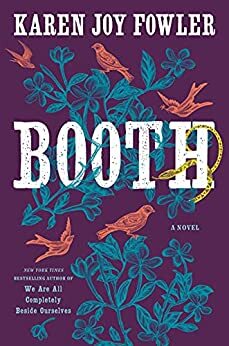
June 19, 2022
Sunday Review: The Diamond Eye by Kate Quinn
Kate Quinn’s latest novel is a World War II story with current relevance: it is about Mila Pavlichenko, a young woman from Kyiv, Ukraine, who gives up her quiet life as a mother, librarian, and grad student writing a dissertation on the history of Ukraine to help protect her homeland against brutal invaders. She becomes such a proficient sniper—with 309 official kills to her name and many more unrecorded—that she becomes a national hero known as Lady Death.
Mila is sent on a goodwill tour to the United States, where she develops an unlikely friendship with Eleanor Roosevelt (which really happened) and gets involved unwittingly in a plot to assassinate FDR (a fictional device with enough historical precedent to be plausible).
This is one of my favorite novels by Quinn. Instead of the multiple perspectives / time lines she has employed so often, this novel sticks with Mila throughout, and I thought the laser focus was well suited to a story about a sniper who had a legendary “diamond eye” with a rifle sight.
I also enjoyed the journey Mila takes from a frustrated, somewhat helpless young woman, unable to stand up against her domineering and thoughtless older husband, to a military officer who knows her abilities and is able to win the respect of the men under her command.
The detail about the sniper’s craft and the descriptions of the settings also serve to make this a riveting tale.
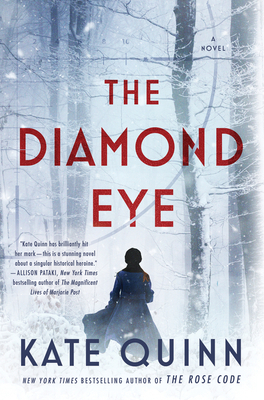
June 5, 2022
Sunday Review: Lady Odelia’s Secret by Jane Steen

I enjoyed the first novel in this series, so I was glad when I learned that Jane Steen had written a sequel. When I found out that part of the story dealt with Victorian artists, I was even happier. I especially enjoy novels that touch on the lives of painters. Sir Geraint’s subject matter is interesting, and I found it easy to visualize his paintings from Steen’s descriptions.
In some ways, this is closer to a historical cozy than a hard-boiled murder mystery, but the novel doesn’t veer too far in that direction. It’s doesn’t dwell on the cute, quaint, eccentric features of the setting that so many cozies do. Instead, it’s as concerned with the intertwined relationships in the Scott-DeQuincy family as the crimes that disrupt their lives. Lady Helena is a very likable character—the overlooked baby of an aristocratic family, forced by the death of her beloved husband to develop a stronger backbone and more independent spirit than she might have otherwise.
Odelia is Helena’s much older and favored sister, who spends most of her time in London working as an artist. The secret referred to in the title puts enormous strain on the sisters’ relationship and forces Helena to make choices about her values even as she tries discover who is stalking her sister with malicious intent.
I’d be remiss not to mention that Fortier, the intelligent and attractive French doctor, is back, and Helena learns a bit more about the problem marriage that has made their growing attraction an impossibility. I’m sure that readers will meet him again in future installments.
I recommend this book without reservation as well as its prequel.
May 29, 2022
Sunday Review: And by Fire by Evie Hawtrey
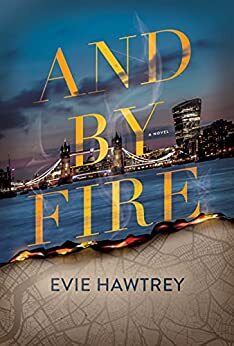
Evie Hawtrey’s debut And by Fire crackles with as much energy as a well-tended blaze, one that Hawtrey maintains control of from start to finish.
There are two related storylines in this novel. In 1666, Margaret Dove, lady-in-waiting to the queen of England, wishes she dared pursue a forbidden life, becoming a female scientist and casting off her noble heritage to marry the man she loves, King Charles II’s fireworks maker. When the Great Fire of London breaks out, the two lovers survive but lose track of a friend in the freak explosion that ruins St. Paul’s during the conflagration. What they discover when they seek to find out if their friend is alive or dead casts a possible shadow over the reputation of one of the most prominent men of the age.
In the present day, DI Nigella Parker specializes in cases involving fire. When a serial arsonist begins to set fires in London, hoping to win fame for himself and for a historical figure he believes was overlooked, she and her partner DI Colm O’Leary must brush aside any awkwardness from a past relationship and find the firebug before his crimes escalate.
The book is fast-paced but with enough character development to make the protagonists seem fully human. Highly recommended.
March 27, 2022
Sunday Review: How to Knit a Murder by Sally Goldenbaum
I bought this audiobook because a) it was on sale, b) the setting looked interesting, c) I’m a lifelong knitter, and d) I wanted something light but not TOO light. Most of those expectations were fulfilled.
However, before buying, I looked it up on Amazon and saw that it was listed aa #2 of series, so even though I prefer to read mysteries series in order, I thought dipping in this early wouldn’t be too bad, and if I liked it, I could go back and catch up on the opening installment without too much confusion.
Except the label on Amazon is deceptive. This isn’t book 2 of 5. it’s book 12 of I don’t know how many—16 maybe? Apparently, the author switched publishers after 11 books, and the publisher decided to restart the numbering. Why would they do that? It’s very confusing to readers, and one of the most basic rules of marketing is not to confuse or annoy your customers.
Anyway, the whole time I was reading it, I was having difficulty remembering the characters who seemed to be the recurring cast. I’d get bits of their personalities here and there—but not enough to stick. It was like transferring to a new high school halfway through junior year and not only being unable to break into the in group but also finding it impossible to glean enough information to understand the relationships swirling around you.
The mystery was fine, although I easily spotted the essential piece of information that was tossed out casually about halfway through the book. But I just couldn’t engage enough with the knitting group to want to spend time with this town or these characters further, certainly not enough to go back and wade through 12 books to reach this point and move forward.
I feel like I’m being unnecessarily negative and I’m punishing the author for something the publisher did, but I don’t like being led to expect something that isn’t what I’m getting. Perhaps if Kindle or one of the audiobook vendors I use offers a really cheap version of the real book 1 in the series, I’ll give it another try, or maybe I’ll eventually see if my library carries the books. But not until I’ve had a chance to let the irritation settle and see whether I develop any curiosity about the characters.
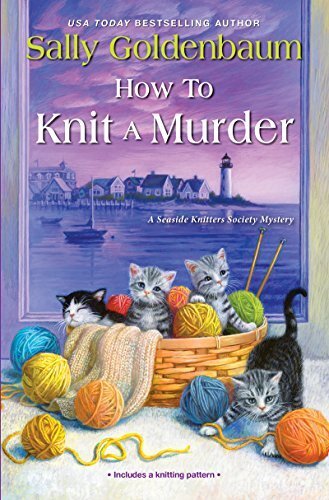
March 20, 2022
Sunday Review: How the Deer Moon Hungers by Susan Wingate
The novel opens with a throat-grabbing scene narrated by the spirit of seven-year-old Tessa, who floats above a team of paramedics who are frantically trying to save her life as they transport her to an emergency room after an accident. Then the story jumps back in time several days.
Tessa and her sixteen-year-old sister Mackenzie, live on an island in the Pacific Northwest with their mother Uma, who is stressed out, overwhelmed, and raging since her husband left the family. Mackenzie—Mac—just wants to be a teenage girl, hanging out with her best friend Gemma, rolling her eyes at the things grownups do, and maybe, if she works up enough nerve, giving in to her friend’s urging to try marijuana. But because Uma is too overwhelmed to handle her current life, Mac also has to spend more time than she’d like looking after Tessa. The two sisters adore each other, but having a seven-year-old tag along can really cramp a teenager’s style.
Then the unthinkable happens. On a day when Mac and Gemma planned to do “big kid” things, they have to take Tessa with them. During a few minutes of inattention on the older girls’ part, the local drunk runs over Tessa and her bike with his massive tank of a car.
Tessa dies, and Uma blames her older daughter. So do the police, who decide—based on some dubious eyewitness testimony—to arrest Mac on drug charges. The only people who can vouch for Mac’s innocence choose self-protection rather than honesty, and Mac finds herself being sent to juvenile detention, where her already shattered life turns into a nightmare of terror and abuse.
Fortunately, Susan Wingate doesn’t leave us there but rather takes us through the worst of it and into the early stages of Mac’s road to redemption and healing. I recommend this to anyone who wants to be reminded of the possibility of hope after deep despair.
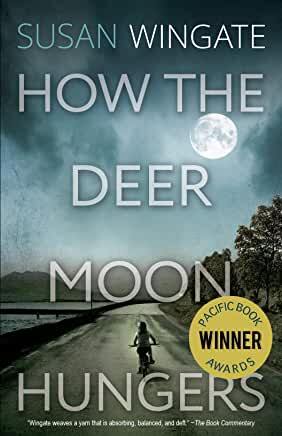
March 13, 2022
Sunday Review: Midnight at the Blackbird Cafe by Heather Webber
This novel is an enjoyable blend of Southern family saga meets magical realism. Anna Kate is a young woman on the verge of starting medical school, less because she wants to than because she promised her late mother Eden that she would take up the career her father never got to practice. A few months before med school is about to start, Anna Kate’s maternal grandmother Zee dies, leaving Anna Kate an estate with a catch.
Zee practiced folk medicine and ran the Blackbird Cafe in Wicklow, Alabama—a town that Eden left behind when her boyfriend was killed in an accident because his parents unjustly accused her of crashing the car on purpose in an attempted murder-suicide. Because of her mother’s painful feelings about the town, Anna Kate has never been there. Now Zee’s will has left the cafe to Anna Kate with the stipulation that she must run it for two months before she can inherit the property and sell it.
It doesn’t take Anna Kate long after arriving in Wicklow to learn that the Blackbird is no ordinary cafe. The pies sold there are said to have magical powers to bring those who are grieving messages from beyond the grave. Except that when Anna Kate bakes the pies, the messages don’t come. “The pies are broken.”
A whimsical yet poignant tale ensues that encompasses solving family mysteries, establishing bonds with estranged relatives, weighing the value of old promises, and possibly finding love. The novel is comforting and thought provoking at the same time. But be forewarned. It will give you a craving for pie, blackberry iced tea, and buttermilk fried chicken.
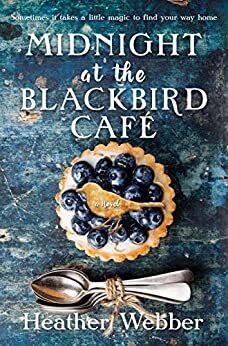
March 6, 2022
Sunday Review: The Masterpiece by Fiona Davis
Fiona Davis specializes in writing historic fiction about well-known buildings in New York City, and I have loved several of her novels. This time she focuses on Grand Central Station. The Masterpiece is a dual-timeline story set in the late 1920s and the mid-1970s.
The 1920s timeline focuses on Clara Darden, a young artist from Arizona who came to New York to study at the Grand Central School of Art. (Did you know there was once an art school on one of the upper floors of Grand Central? I didn’t.) Now working there as an instructor, she has to fight against two kinds of bigotry—sexism and the ingrained belief that illustrators are less-talented and less-important than “serious painters.” She meets and becomes involved with two very different men: a wealthy young poet and a fiery experimental painter from Armenia. Little do any of them know that the high life of the 20s can’t last forever; the economy is heading for a crash that will turn the country upside down and make art a dispensable luxury in a grim new world of standing in soup lines and making do with frayed, years-old clothing.
The 1970s story focuses on Virginia Clay, a women who is recently divorced and struggling to support herself and her daughter. She fails to qualify for the secretarial job she interviews for and ends up working at the Grand Central information booth. By this time, the depot is dirty and neglected—no longer the beautifully decorated showplace it was in the 1920s—and it’s home to drug addicts and other unsavory types, causing passengers to spend as little time there as possible. The building is in danger of being torn down, with only the lower sections incorporated into amuch larger structure.
One day, Virginia happens upon the abandoned art school and discovers a long-forgotten painting that speaks to her deeply. It also reminds her of a painting she saw in a magazine: a piece of art by the painter using the pseudonym Clyde, which is about to go on auction for a fortune.
The art school is the obvious tie between the two storylines, but as Virginia works to both save Grand Central and uncover the truth about the painting she found, more links between the two stories emerge. I found this a very enjoyable read.




